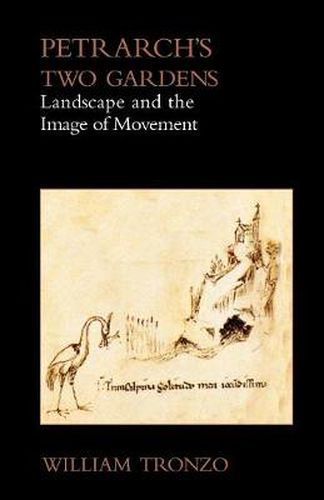Readings Newsletter
Become a Readings Member to make your shopping experience even easier.
Sign in or sign up for free!
You’re not far away from qualifying for FREE standard shipping within Australia
You’ve qualified for FREE standard shipping within Australia
The cart is loading…






This title is printed to order. This book may have been self-published. If so, we cannot guarantee the quality of the content. In the main most books will have gone through the editing process however some may not. We therefore suggest that you be aware of this before ordering this book. If in doubt check either the author or publisher’s details as we are unable to accept any returns unless they are faulty. Please contact us if you have any questions.
The four essays that make up this book take as their subject gardens of the Middle Ages and Renaissance whose traces are still visible, in varying degrees, at sites in Italy and France: Palermo and Rome, the Vaucluse and Hesdin. Traces only, as these gardens have long since been emptied of the life whose insistent motion gave them shape and in the intervening years have been transformed in such a way as to entangle and obscure significant moments of their past. Yet these moments were also refracted in other media - images and texts - that may be used to bring the past into focus again in the landscape itself. The following book attempts precisely this. Its modus operandi is an experiment, crossing the constitutive acts of the discipline of archaeology - excavation and reconstruction - with the protocols of the history of art, as it will involve, in a continuous circuit, both the identification and the interpretation of salient witnesses of the past. This experiment may derive from archaeology and the history of art, but its subject belongs to the field of landscape studies, which has truly burgeoned in recent years under the auspices of a provisional and yet ever-widening constituency of disciplines and initiatives, including garden history, cultural geography and environmental science, as well as anthropology and the histories of art and architecture, literature, material culture and performance. As landscape has become an increasingly independent field of inquiry, however, it has tended to take on the character of an autonomous form like that of the arts, whose methods of theory and criticism have become ensconced in the academy. This book will take a different path. The landscape it seeks to narrate, in four discrete episodes, stands not alone, as an independent and integral creation, but as an installation within a more enduring environment in much the same way that temporary ambient architecture - the architecture of the stage set, the showroom and the festival - stands within the framework of building and city. - from the Author’s Prologue. 238 pages. Acknowledgments, prologue, notes, bibliography and index. 78 color and black & white illustrations. Art history, aesthetics, cultural studies, landscape studies.
$9.00 standard shipping within Australia
FREE standard shipping within Australia for orders over $100.00
Express & International shipping calculated at checkout
This title is printed to order. This book may have been self-published. If so, we cannot guarantee the quality of the content. In the main most books will have gone through the editing process however some may not. We therefore suggest that you be aware of this before ordering this book. If in doubt check either the author or publisher’s details as we are unable to accept any returns unless they are faulty. Please contact us if you have any questions.
The four essays that make up this book take as their subject gardens of the Middle Ages and Renaissance whose traces are still visible, in varying degrees, at sites in Italy and France: Palermo and Rome, the Vaucluse and Hesdin. Traces only, as these gardens have long since been emptied of the life whose insistent motion gave them shape and in the intervening years have been transformed in such a way as to entangle and obscure significant moments of their past. Yet these moments were also refracted in other media - images and texts - that may be used to bring the past into focus again in the landscape itself. The following book attempts precisely this. Its modus operandi is an experiment, crossing the constitutive acts of the discipline of archaeology - excavation and reconstruction - with the protocols of the history of art, as it will involve, in a continuous circuit, both the identification and the interpretation of salient witnesses of the past. This experiment may derive from archaeology and the history of art, but its subject belongs to the field of landscape studies, which has truly burgeoned in recent years under the auspices of a provisional and yet ever-widening constituency of disciplines and initiatives, including garden history, cultural geography and environmental science, as well as anthropology and the histories of art and architecture, literature, material culture and performance. As landscape has become an increasingly independent field of inquiry, however, it has tended to take on the character of an autonomous form like that of the arts, whose methods of theory and criticism have become ensconced in the academy. This book will take a different path. The landscape it seeks to narrate, in four discrete episodes, stands not alone, as an independent and integral creation, but as an installation within a more enduring environment in much the same way that temporary ambient architecture - the architecture of the stage set, the showroom and the festival - stands within the framework of building and city. - from the Author’s Prologue. 238 pages. Acknowledgments, prologue, notes, bibliography and index. 78 color and black & white illustrations. Art history, aesthetics, cultural studies, landscape studies.